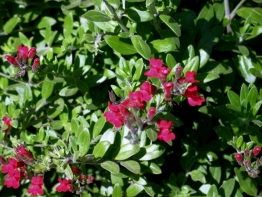The Meadow Garden
The Meadow Garden? –by Matilija Bob, Matilija Nursery
The meadow garden has gotten to be a trendy thing over the last few years, but what exactly is it? Well, searching the www I found lots of definitions or none at all depending on your viewpoint. There do seem to be a few commonalities. A meadow is an informal garden often times composed of grasses and other annuals, generally; but, it can be somewhat formal and have perennials too. Say what?
Here’s a workable definition: a meadow garden is generally informal but not totally random. They’re often designed with groupings of plants to tone down some of the wild look and keep the fire department from citing you for not practicing proper fire abatement. They do, indeed, often incorporate grasses and annuals; but the more salient trademark is that they are generally planted with a central section of plants that tend to be short so that you can look across the garden from one end to the other without obstruction.
Now, what about care and maintenance? Care and maintenance should be minimal if you’re doing this right. While you need to water regularly (1 – 2 times/week) when your new meadow is getting established; generally, 1 year or less after that, things should be on their own. It’s okay to cheat a bit and water during a dry winter or summer (2x per/month) after your meadow’s established, but that’s it. With more water, you most likely will start to do “damage”. Meadows should principally rely on rain for their irrigation.
You may also want to cut plants back on occasion to neaten the meadow up a bit. This can range from an annual mowing to a 3 times/year clipping. The “leave it alone and let it grow naturally” approach is also fine, but your neighbors, family members, and fire department might not share the same view.
The following are some examples of meadow landscapes with comments.
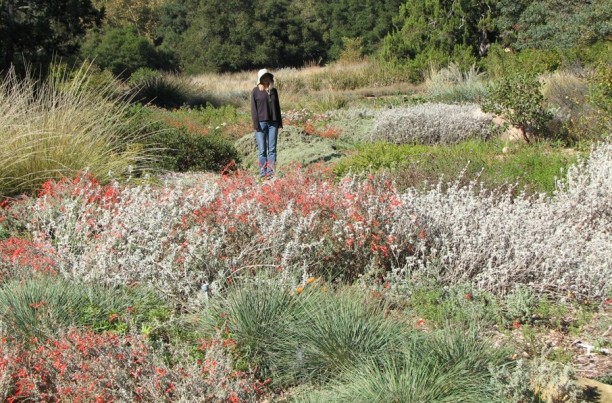
This is the meadow at the Santa Barbara Botanic Garden – a classic, but a little big for the average front yard. This picture was taken in October, a rough season for the native California meadow; yet with the different leaf textures and colors and use of fall flowering plants like the California fuschia, it looks pretty cool.
No, these are not from residential gardens; they’re natural meadows.
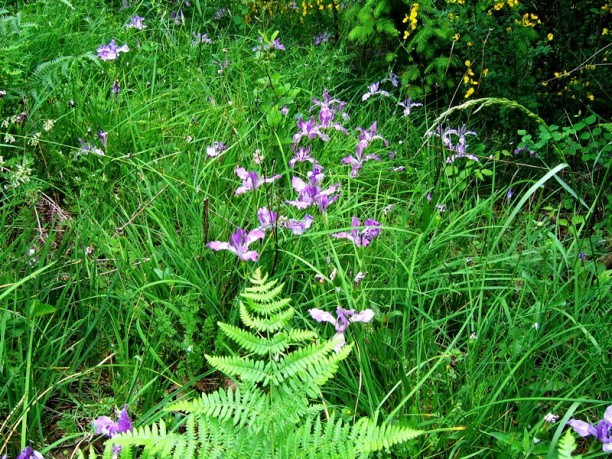
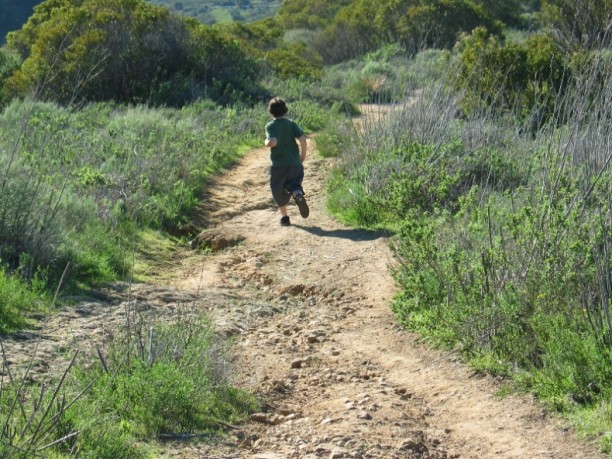
The top photo are grasses and irises in Oregon. The lower meadow scene was photographed in the Santa Monica Mountains. The meadow with native grasses and pacific coast irises can easily be done in semi shaded areas in an “average” size yard. The second meadow taken in the Santa Monica’s, while a bit large in scale for the average home yard illustrates the idea of a “path” that provides visual direction and focus which can be an important element in home meadow design.
Here are a few more home garden size examples to take a look at.
![563386_336075199775160_100001180499163_899714_419328101_n[1]](http://www.matilijanursery.com/wp-content/uploads/2012/12/563386_336075199775160_100001180499163_899714_419328101_n1-612x372.jpg)
This is a real clean and simple example of a meadow garden. You’ve got the low growing grassy section in the middle, which is Carex praegracilis and California poppies. At the outer edges, you have some low growing Ceanothus and Verbena. This is a garden that my friend, Trish Munro, designed for a client.
The next meadow is small and a bit on the complex side.
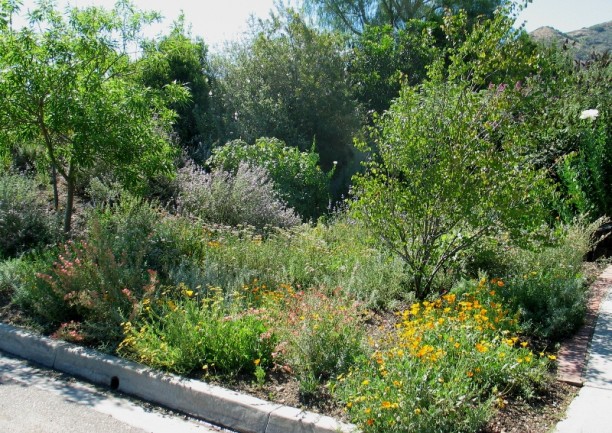
This is a meadow in the sense that it is a blend of relatively low growing plants such that you can see across the whole landscape without obstruction. Like the others, its supplemental irrigation requirements are “zip”. Maintenance is a 2 times/year trim. The plants used for the meadow in the middle of the landscape include chocolate daisies, desert mallow, island pink yarrow, Calif. fuschia, and some California poppies. At the edges are larger California natives including Cleveland and purple sage, Matilija poppies, island bush mallow, western redbud, and Chatalpa.
There are also plenty of birds, hummingbirds, butterflies, and bees that are attracted to meadows. That’ll be part of the next installment.
